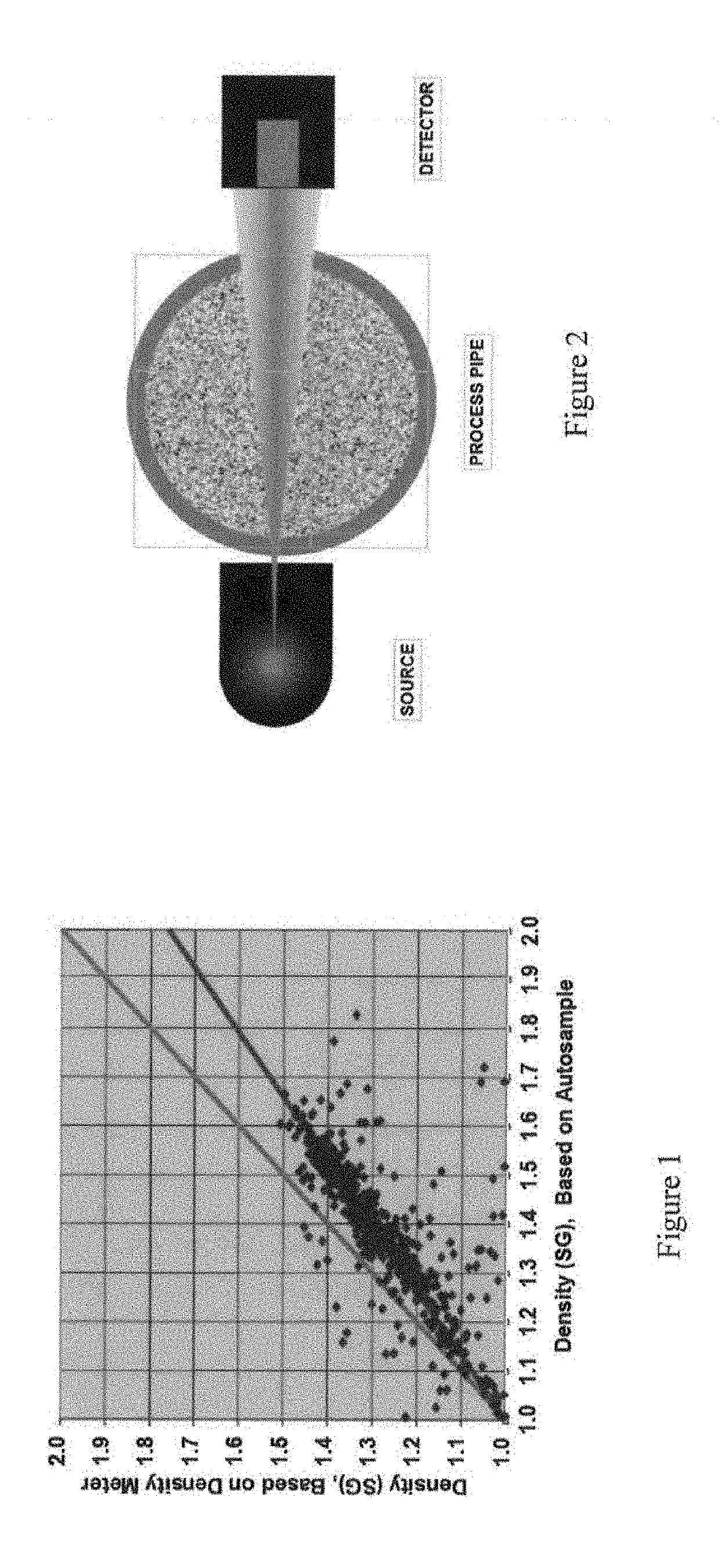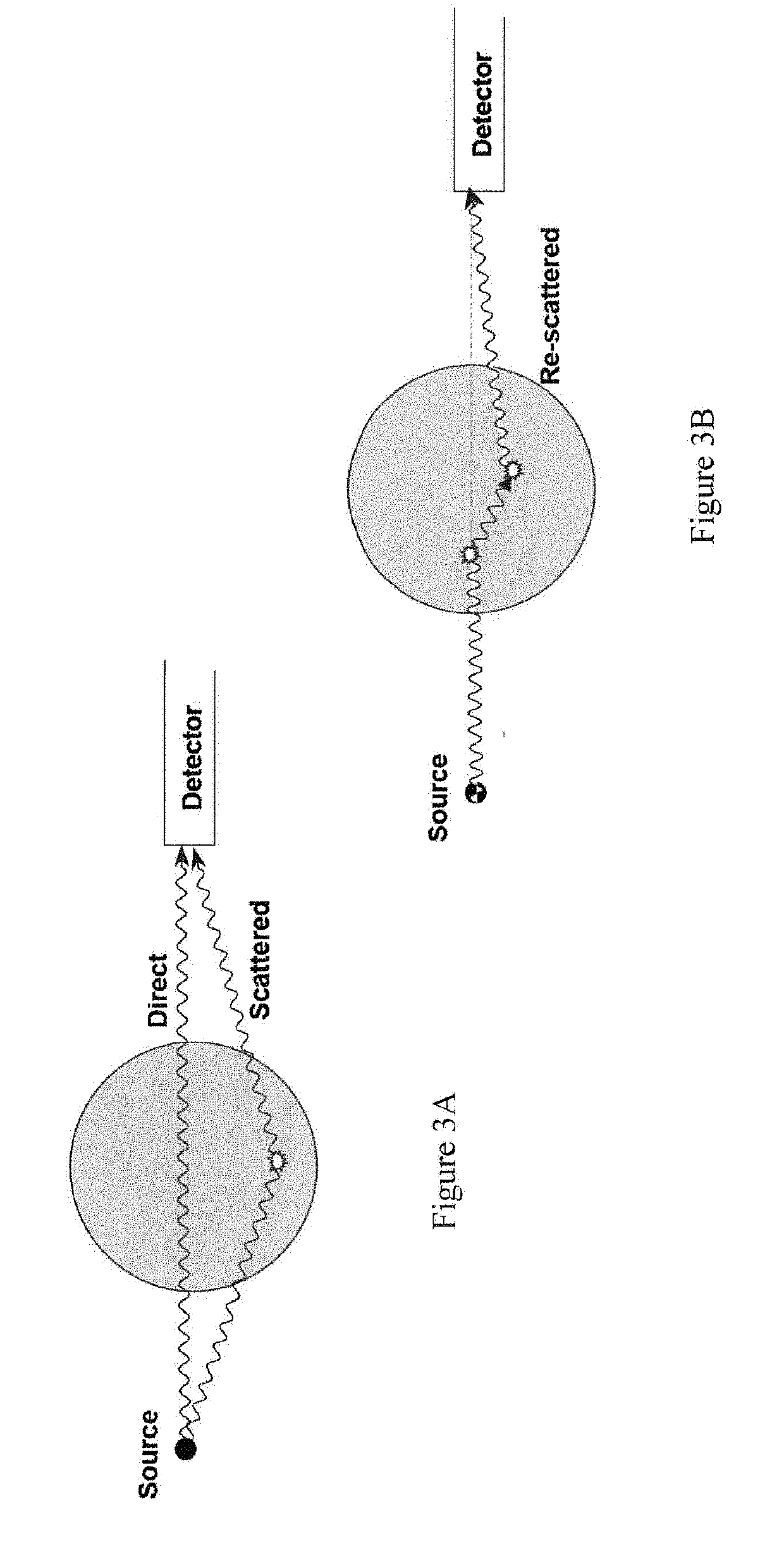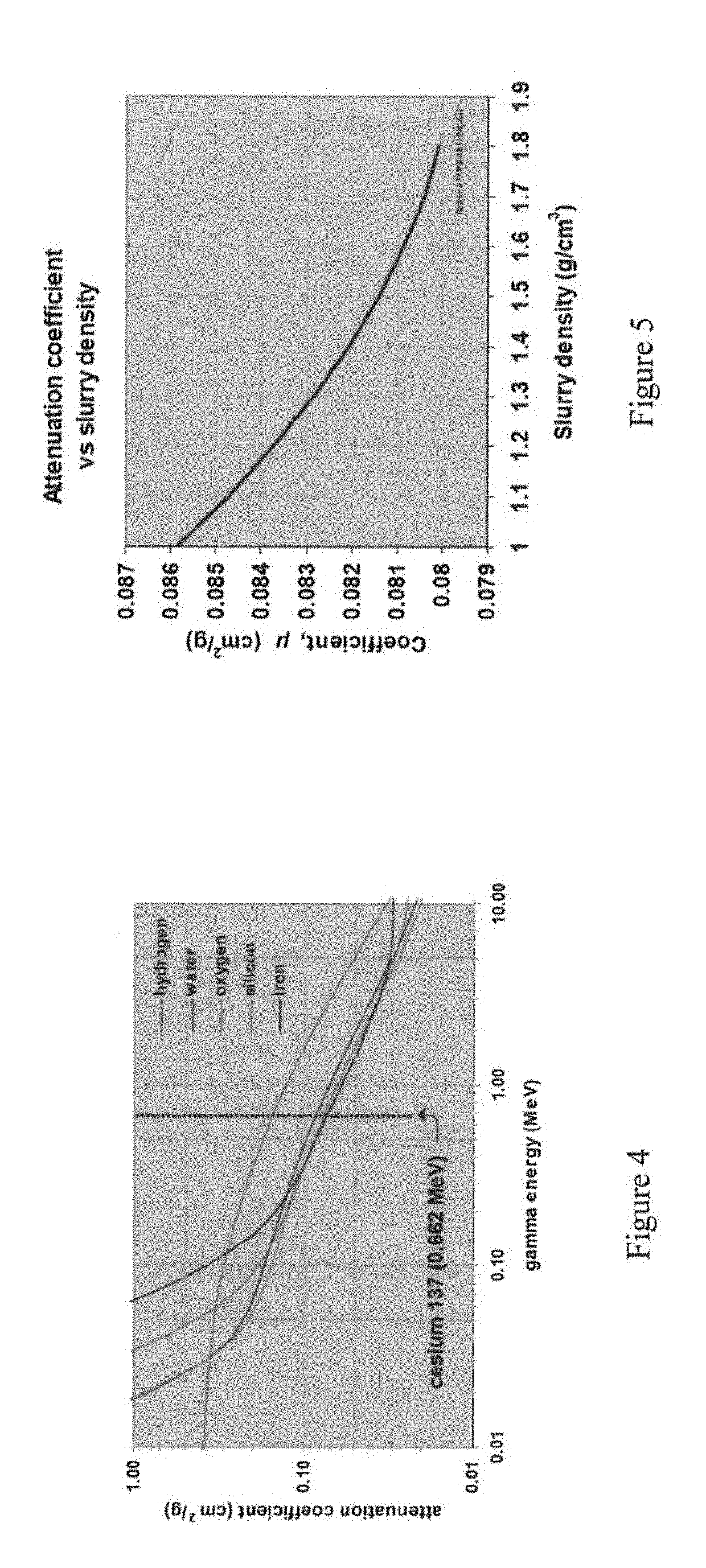Calibration of nuclear density meters
a density meter and measurement system technology, applied in the field of systems and methods of calibrating nuclear density meter, can solve the problems of incomplete absorption, skew prediction, and gamma buildup problem,
- Summary
- Abstract
- Description
- Claims
- Application Information
AI Technical Summary
Benefits of technology
Problems solved by technology
Method used
Image
Examples
examples
[0070]Examples are provided which demonstrate the feasibility of using a simple model for gamma attenuation (as expressed by equation 4) to relate a gamma measurement to the specific gravity of a slurry without the need for empirical calibration. The effect of variable attenuation coefficients, discussed above can be calculated and readily included in the model. Examples aimed at exploring the extent of radiation buildup and the feasibility of specifying values for buildup factors to be included in the model.
Experimental Set-Up
[0071]The test equipment is shown schematically in FIG. 11. The equipment had the following features:[0072]1. Slurry was simulated using water and salt solutions (specific gravities of 1, 1.37, 1.5 and 1.7).[0073]2. Steel plates were used to simulate the pipe walls.[0074]3. A 180 millicurie Cesium 137 source was used.[0075]4. A 2″×2″ NaI scintillation crystal was used in conjunction with a compact 1028 channel multichannel analyzer.[0076]5. Various absorption ...
PUM
| Property | Measurement | Unit |
|---|---|---|
| nuclear density meter | aaaaa | aaaaa |
| density | aaaaa | aaaaa |
| net attenuation coefficient | aaaaa | aaaaa |
Abstract
Description
Claims
Application Information
 Login to View More
Login to View More - R&D
- Intellectual Property
- Life Sciences
- Materials
- Tech Scout
- Unparalleled Data Quality
- Higher Quality Content
- 60% Fewer Hallucinations
Browse by: Latest US Patents, China's latest patents, Technical Efficacy Thesaurus, Application Domain, Technology Topic, Popular Technical Reports.
© 2025 PatSnap. All rights reserved.Legal|Privacy policy|Modern Slavery Act Transparency Statement|Sitemap|About US| Contact US: help@patsnap.com



